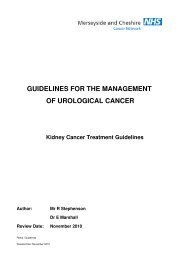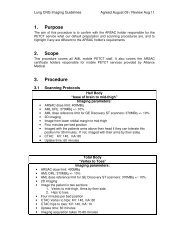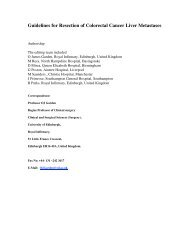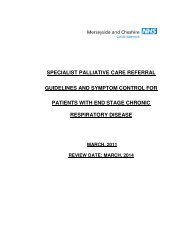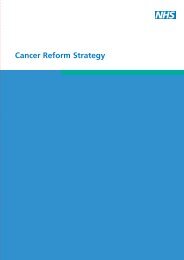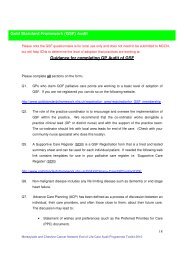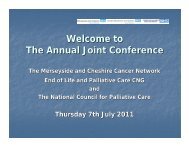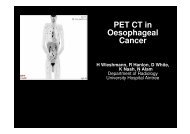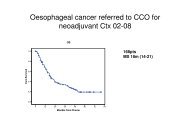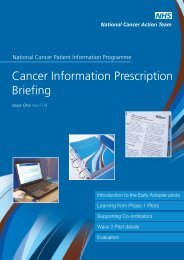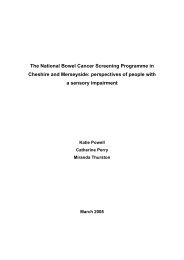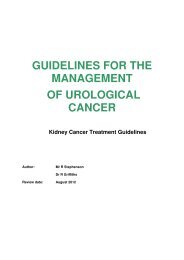Cancer Reform Strategy - First Annual Report - Merseyside ...
Cancer Reform Strategy - First Annual Report - Merseyside ...
Cancer Reform Strategy - First Annual Report - Merseyside ...
Create successful ePaper yourself
Turn your PDF publications into a flip-book with our unique Google optimized e-Paper software.
CHAPTER 7: DElIVERINg CARE IN THE MoST APPRoPRIATE SETTINg477.8 Examples of the type of changes that have been achieved are set out in box 16 below:Box 16: Improving inpatient care examplesWinning Principle 1. Sherwood Forest Hospital NHS Foundation TrustThe Trust reduced the average length of stay by 25% for lung cancer patients by developing andtesting a Recurring Admission Patient Alert System (RAPA) and identified the potential to release560 bed days per annum. The success of this approach has now been implemented across thewhole hospital and won the 2007 Medical Innovation Futures Award.“RAPA is a simple communication solution that ensures that everyone knows their patient isthere. It has worked successfully in cancer and now the idea is used across other specialties.”Winning Principle 2. Sandwell & West Birmingham Hospital NHS TrustThe Trust reduced the average length of stay for breast cancer patients undergoing electivesurgery (including mastectomy patients) from 6.6 days to 23 hours. Approximately 300 patientsa year will benefit. All breast cancer patients are now treated in the treatment centre. Changesin clinical practice have supported this development with robust pre-operative screening andwound drains are no longer inserted. Current medical audit of this approach has shown areduction in hospital acquired infection and patients’ satisfaction with this new model of carehas been very positive.“The 23 hour stay was universally popular with patients from all backgrounds.”Winning Principle 3. Improving bed utilisation of oncology beds – Brighton and SussexUniversity Hospitals NHS Trust and the Sussex <strong>Cancer</strong> NetworkThe second half of 2007 and early 2008 saw the team at Brighton and Sussex UniversityHospital participating in the national <strong>Cancer</strong> Collaborative “Inpatient Experience” work streamto identify what makes a difference to the cancer inpatient experience. As one of the nationalpilot sites the team, supported by a service improvement facilitator from the Sussex <strong>Cancer</strong>Network, set out to test the following principle: could “timely decision making” improve accessand reduce length of stay? The focus was oncology inpatients in Howard 1 ward.Baseline – there were two areas identified where it was felt improvements could be made.one related to “access”, where only half of elective patients were normally admitted on theiroriginal planned date (“clinical priority” patients were among those deferred). The other relatedto patient discharge, where about a third of elective patients stayed beyond their planneddischarge date. The average overstay was around half a day. The baseline measure for averagestay was 2.92 bed days per patient.Changes – with support from the oncologists, several changes were implemented, which havenow become normal working practice:“Admission Priorities criteria” were produced, with a reference chart to automate the decisionmakingprocess, ensure admission based upon clinical priority, to help forecast and managepatient flow and help take emotion out of the decision making.Benchmark length of stay periods by treatment were established and processes introduced touse the benchmarks for improved discharge management. This involved the setting up of aweekly inpatient review meeting involving oncologists, including the patients’ planned dischargedate on shift handover sheets, daily “paper” ward round attended by the ward team, and anescalation procedure if discharge overstay is likely.




